Setareh Rafatirad
Self-Supervised and Topological Signal-Quality Assessment for Any PPG Device
Sep 15, 2025Abstract:Wearable photoplethysmography (PPG) is embedded in billions of devices, yet its optical waveform is easily corrupted by motion, perfusion loss, and ambient light, jeopardizing downstream cardiometric analytics. Existing signal-quality assessment (SQA) methods rely either on brittle heuristics or on data-hungry supervised models. We introduce the first fully unsupervised SQA pipeline for wrist PPG. Stage 1 trains a contrastive 1-D ResNet-18 on 276 h of raw, unlabeled data from heterogeneous sources (varying in device and sampling frequency), yielding optical-emitter- and motion-invariant embeddings (i.e., the learned representation is stable across differences in LED wavelength, drive intensity, and device optics, as well as wrist motion). Stage 2 converts each 512-D encoder embedding into a 4-D topological signature via persistent homology (PH) and clusters these signatures with HDBSCAN. To produce a binary signal-quality index (SQI), the acceptable PPG signals are represented by the densest cluster while the remaining clusters are assumed to mainly contain poor-quality PPG signals. Without re-tuning, the SQI attains Silhouette, Davies-Bouldin, and Calinski-Harabasz scores of 0.72, 0.34, and 6173, respectively, on a stratified sample of 10,000 windows. In this study, we propose a hybrid self-supervised-learning--topological-data-analysis (SSL--TDA) framework that offers a drop-in, scalable, cross-device quality gate for PPG signals.
Generalizable Blood Pressure Estimation from Multi-Wavelength PPG Using Curriculum-Adversarial Learning
Sep 15, 2025Abstract:Accurate and generalizable blood pressure (BP) estimation is vital for the early detection and management of cardiovascular diseases. In this study, we enforce subject-level data splitting on a public multi-wavelength photoplethysmography (PPG) dataset and propose a generalizable BP estimation framework based on curriculum-adversarial learning. Our approach combines curriculum learning, which transitions from hypertension classification to BP regression, with domain-adversarial training that confuses subject identity to encourage the learning of subject-invariant features. Experiments show that multi-channel fusion consistently outperforms single-channel models. On the four-wavelength PPG dataset, our method achieves strong performance under strict subject-level splitting, with mean absolute errors (MAE) of 14.2mmHg for systolic blood pressure (SBP) and 6.4mmHg for diastolic blood pressure (DBP). Additionally, ablation studies validate the effectiveness of both the curriculum and adversarial components. These results highlight the potential of leveraging complementary information in multi-wavelength PPG and curriculum-adversarial strategies for accurate and robust BP estimation.
Rapid Adaptation of SpO2 Estimation to Wearable Devices via Transfer Learning on Low-Sampling-Rate PPG
Sep 15, 2025Abstract:Blood oxygen saturation (SpO2) is a vital marker for healthcare monitoring. Traditional SpO2 estimation methods often rely on complex clinical calibration, making them unsuitable for low-power, wearable applications. In this paper, we propose a transfer learning-based framework for the rapid adaptation of SpO2 estimation to energy-efficient wearable devices using low-sampling-rate (25Hz) dual-channel photoplethysmography (PPG). We first pretrain a bidirectional Long Short-Term Memory (BiLSTM) model with self-attention on a public clinical dataset, then fine-tune it using data collected from our wearable We-Be band and an FDA-approved reference pulse oximeter. Experimental results show that our approach achieves a mean absolute error (MAE) of 2.967% on the public dataset and 2.624% on the private dataset, significantly outperforming traditional calibration and non-transferred machine learning baselines. Moreover, using 25Hz PPG reduces power consumption by 40% compared to 100Hz, excluding baseline draw. Our method also attains an MAE of 3.284% in instantaneous SpO2 prediction, effectively capturing rapid fluctuations. These results demonstrate the rapid adaptation of accurate, low-power SpO2 monitoring on wearable devices without the need for clinical calibration.
HW-V2W-Map: Hardware Vulnerability to Weakness Mapping Framework for Root Cause Analysis with GPT-assisted Mitigation Suggestion
Dec 21, 2023Abstract:The escalating complexity of modern computing frameworks has resulted in a surge in the cybersecurity vulnerabilities reported to the National Vulnerability Database (NVD) by practitioners. Despite the fact that the stature of NVD is one of the most significant databases for the latest insights into vulnerabilities, extracting meaningful trends from such a large amount of unstructured data is still challenging without the application of suitable technological methodologies. Previous efforts have mostly concentrated on software vulnerabilities; however, a holistic strategy incorporates approaches for mitigating vulnerabilities, score prediction, and a knowledge-generating system that may extract relevant insights from the Common Weakness Enumeration (CWE) and Common Vulnerability Exchange (CVE) databases is notably absent. As the number of hardware attacks on Internet of Things (IoT) devices continues to rapidly increase, we present the Hardware Vulnerability to Weakness Mapping (HW-V2W-Map) Framework, which is a Machine Learning (ML) framework focusing on hardware vulnerabilities and IoT security. The architecture that we have proposed incorporates an Ontology-driven Storytelling framework, which automates the process of updating the ontology in order to recognize patterns and evolution of vulnerabilities over time and provides approaches for mitigating the vulnerabilities. The repercussions of vulnerabilities can be mitigated as a result of this, and conversely, future exposures can be predicted and prevented. Furthermore, our proposed framework utilized Generative Pre-trained Transformer (GPT) Large Language Models (LLMs) to provide mitigation suggestions.
A Neural Network-based SAT-Resilient Obfuscation Towards Enhanced Logic Locking
Sep 13, 2022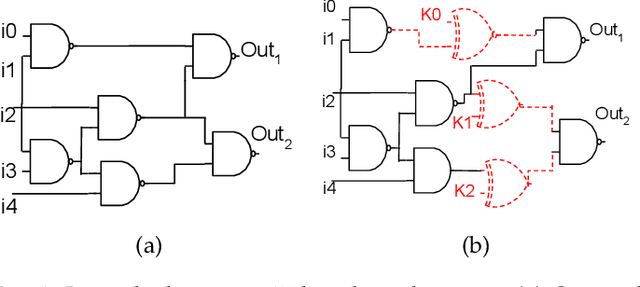
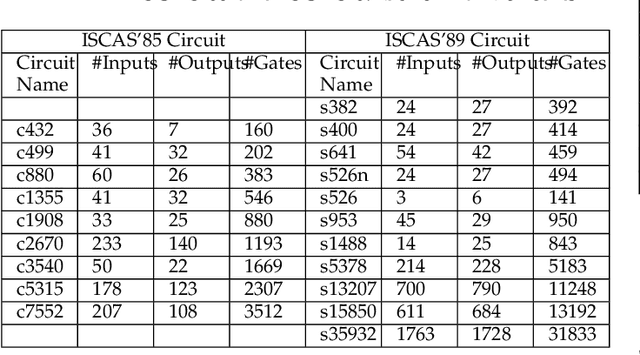
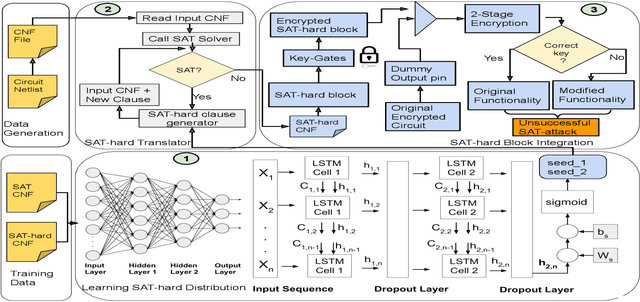
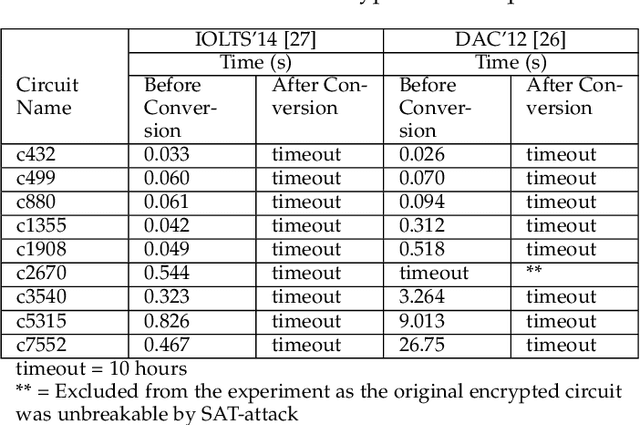
Abstract:Logic obfuscation is introduced as a pivotal defense against multiple hardware threats on Integrated Circuits (ICs), including reverse engineering (RE) and intellectual property (IP) theft. The effectiveness of logic obfuscation is challenged by the recently introduced Boolean satisfiability (SAT) attack and its variants. A plethora of countermeasures has also been proposed to thwart the SAT attack. Irrespective of the implemented defense against SAT attacks, large power, performance, and area overheads are indispensable. In contrast, we propose a cognitive solution: a neural network-based unSAT clause translator, SATConda, that incurs a minimal area and power overhead while preserving the original functionality with impenetrable security. SATConda is incubated with an unSAT clause generator that translates the existing conjunctive normal form (CNF) through minimal perturbations such as the inclusion of pair of inverters or buffers or adding a new lightweight unSAT block depending on the provided CNF. For efficient unSAT clause generation, SATConda is equipped with a multi-layer neural network that first learns the dependencies of features (literals and clauses), followed by a long-short-term-memory (LSTM) network to validate and backpropagate the SAT-hardness for better learning and translation. Our proposed SATConda is evaluated on ISCAS85 and ISCAS89 benchmarks and is seen to defend against multiple state-of-the-art successfully SAT attacks devised for hardware RE. In addition, we also evaluate our proposed SATCondas empirical performance against MiniSAT, Lingeling and Glucose SAT solvers that form the base for numerous existing deobfuscation SAT attacks.
Deep Multi-attributed Graph Translation with Node-Edge Co-evolution
Mar 22, 2020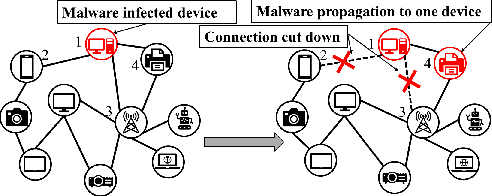
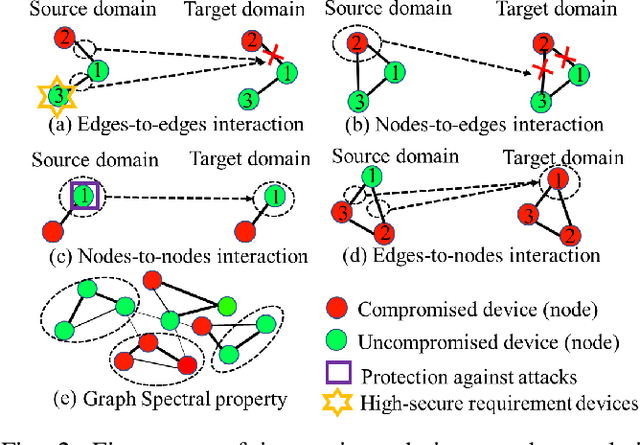
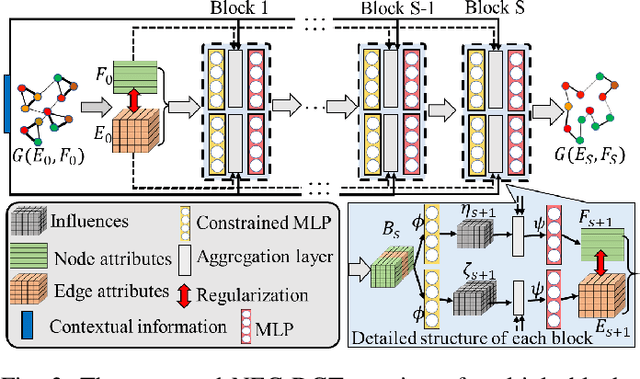
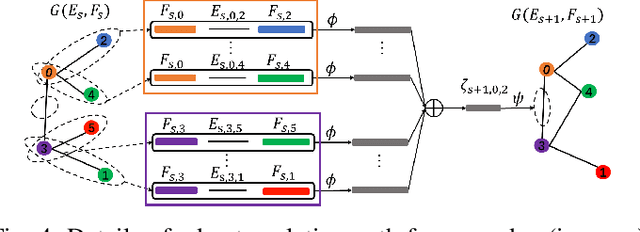
Abstract:Generalized from image and language translation, graph translation aims to generate a graph in the target domain by conditioning an input graph in the source domain. This promising topic has attracted fast-increasing attention recently. Existing works are limited to either merely predicting the node attributes of graphs with fixed topology or predicting only the graph topology without considering node attributes, but cannot simultaneously predict both of them, due to substantial challenges: 1) difficulty in characterizing the interactive, iterative, and asynchronous translation process of both nodes and edges and 2) difficulty in discovering and maintaining the inherent consistency between the node and edge in predicted graphs. These challenges prevent a generic, end-to-end framework for joint node and edge attributes prediction, which is a need for real-world applications such as malware confinement in IoT networks and structural-to-functional network translation. These real-world applications highly depend on hand-crafting and ad-hoc heuristic models, but cannot sufficiently utilize massive historical data. In this paper, we termed this generic problem "multi-attributed graph translation" and developed a novel framework integrating both node and edge translations seamlessly. The novel edge translation path is generic, which is proven to be a generalization of the existing topology translation models. Then, a spectral graph regularization based on our non-parametric graph Laplacian is proposed in order to learn and maintain the consistency of the predicted nodes and edges. Finally, extensive experiments on both synthetic and real-world application data demonstrated the effectiveness of the proposed method.
* This paper has been accepted by International Conference on Data Mining (ICDM), Beijing, China, 2019
Pyramid: Machine Learning Framework to Estimate the Optimal Timing and Resource Usage of a High-Level Synthesis Design
Jul 29, 2019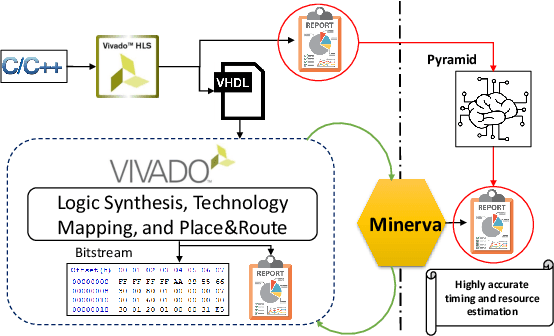
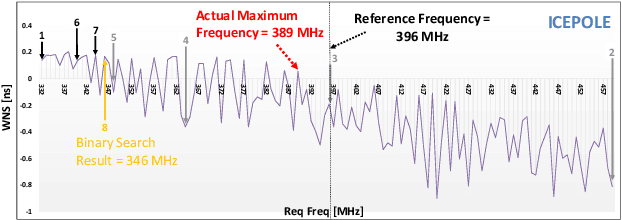
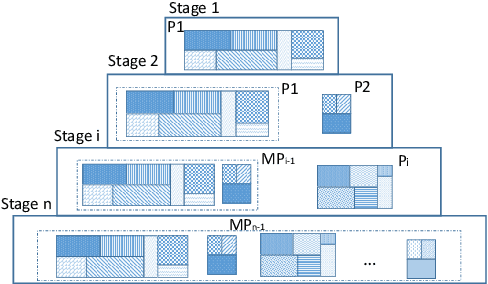

Abstract:The emergence of High-Level Synthesis (HLS) tools shifted the paradigm of hardware design by making the process of mapping high-level programming languages to hardware design such as C to VHDL/Verilog feasible. HLS tools offer a plethora of techniques to optimize designs for both area and performance, but resource usage and timing reports of HLS tools mostly deviate from the post-implementation results. In addition, to evaluate a hardware design performance, it is critical to determine the maximum achievable clock frequency. Obtaining such information using static timing analysis provided by CAD tools is difficult, due to the multitude of tool options. Moreover, a binary search to find the maximum frequency is tedious, time-consuming, and often does not obtain the optimal result. To address these challenges, we propose a framework, called Pyramid, that uses machine learning to accurately estimate the optimal performance and resource utilization of an HLS design. For this purpose, we first create a database of C-to-FPGA results from a diverse set of benchmarks. To find the achievable maximum clock frequency, we use Minerva, which is an automated hardware optimization tool. Minerva determines the close-to-optimal settings of tools, using static timing analysis and a heuristic algorithm, and targets either optimal throughput or throughput-to-area. Pyramid uses the database to train an ensemble machine learning model to map the HLS-reported features to the results of Minerva. To this end, Pyramid re-calibrates the results of HLS to bridge the accuracy gap and enable developers to estimate the throughput or throughput-to-area of hardware design with more than 95% accuracy and alleviates the need to perform actual implementation for estimation.
Estimating the Circuit Deobfuscating Runtime based on Graph Deep Learning
Feb 14, 2019
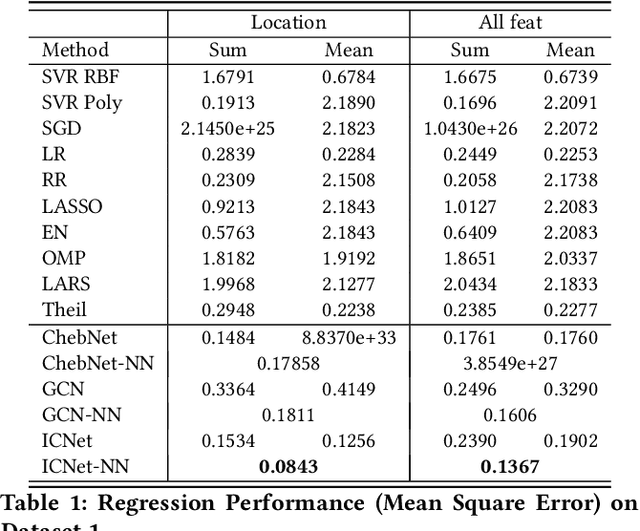
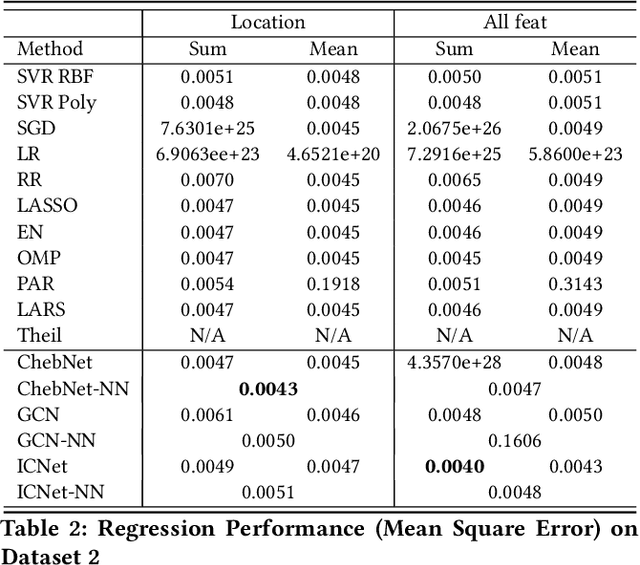
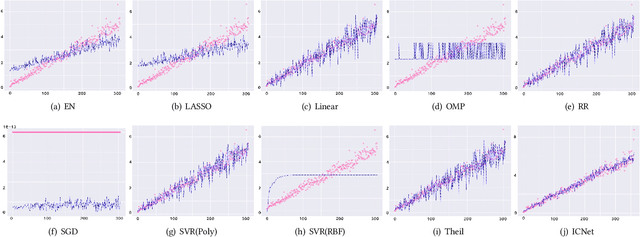
Abstract:Circuit obfuscation is a recently proposed defense mechanism to protect digital integrated circuits (ICs) from reverse engineering by using camouflaged gates i.e., logic gates whose functionality cannot be precisely determined by the attacker. There have been effective schemes such as satisfiability-checking (SAT)-based attacks that can potentially decrypt obfuscated circuits, called deobfuscation. Deobfuscation runtime could have a large span ranging from few milliseconds to thousands of years or more, depending on the number and layouts of the ICs and camouflaged gates. And hence accurately pre-estimating the deobfuscation runtime is highly crucial for the defenders to maximize it and optimize their defense. However, estimating the deobfuscation runtime is a challenging task due to 1) the complexity and heterogeneity of graph-structured circuit, 2) the unknown and sophisticated mechanisms of the attackers for deobfuscation. To address the above mentioned challenges, this work proposes the first machine-learning framework that predicts the deobfuscation runtime based on graph deep learning techniques. Specifically, we design a new model, ICNet with new input and convolution layers to characterize and extract graph frequencies from ICs, which are then integrated by heterogeneous deep fully-connected layers to obtain final output. ICNet is an end-to-end framework which can automatically extract the determinant features for deobfuscation runtime. Extensive experiments demonstrate its effectiveness and efficiency.
 Add to Chrome
Add to Chrome Add to Firefox
Add to Firefox Add to Edge
Add to Edge